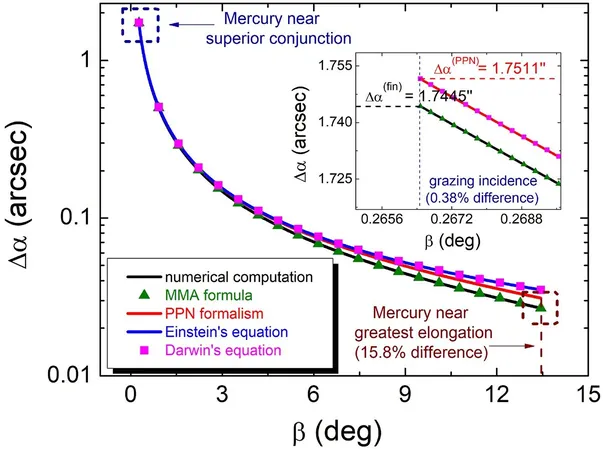
Revolutionary Equation Promises Precise Tracking of Earth-Bound Asteroids
2024-11-25
Author: Liam
Revolutionary Equation Promises Precise Tracking of Earth-Bound Asteroids
Identifying asteroids on a potential collision course with Earth may soon become significantly more accurate, thanks to a groundbreaking advancement in tracking their orbits. Researchers have recently unveiled a new equation which enhances our ability to pinpoint the positions of minor solar system objects, including asteroids in the infamous Kuiper Belt and the distant Oort Cloud.
This exciting breakthrough is rooted in classic physics, initially proposed by Sir Isaac Newton and further expanded upon by Albert Einstein. The new study, published in the esteemed Monthly Notices of the Royal Astronomical Society, focuses on the gravitational bending of light (GBL) angle—a phenomenon that can be used to gauge spatial relationships in our solar system.
Professor Oscar del Barco Novillo, from the University of Murcia in Spain, has made a significant contribution by presenting an exact equation for calculating the GBL angle induced by a static massive object, such as the sun or any slowly-moving planet. This innovation allows astronomers to accurately establish the positions of asteroids and other minor celestial objects with newfound precision.
Why does this matter? Accurate tracking of asteroids could help identify those posing a potential threat to Earth, thereby increasing our ability to devise effective defense strategies against possible impacts. Additionally, this enhanced tracking could lead to a more precise understanding of the nearest star to our planet, Proxima Centauri. Located 4.25 light-years away, Proxima Centauri is thought to host three exoplanets—making its precise location crucial for studying their orbits as well.
Professor Novillo emphasizes the broad implications of their findings. “This new equation could ultimately refine the positioning of distant stars and minor solar system objects. As a result, various branches of astronomy, particularly celestial mechanics and stellar dynamics, might greatly benefit from this enhanced understanding.”
Beyond asteroids, this research has the potential to refine our measurements of distant galaxies distorted by gravitational lensing effects caused by massive galaxy clusters. Such advancements are pivotal for astrometry, which focuses on the precise tracking of celestial bodies. Notably, this could significantly enhance future missions like the European Space Agency’s Euclid mission, which aims to create the largest cosmic 3D map ever produced by observing billions of galaxies over the next six years. This mission is particularly focused on unraveling the mysteries of dark matter and dark energy shaping our universe.
In conclusion, the ripple effects of this new equation are poised to transform our approach to astrophysics and celestial navigation. With improved precision in measuring the positions and movements of celestial bodies, scientists may soon gain deeper insights into the cosmos and bolster our planetary defense efforts against rogue asteroids. Keep an eye on the skies—humanity's safety may depend on it!









 Brasil (PT)
Brasil (PT)
 Canada (EN)
Canada (EN)
 Chile (ES)
Chile (ES)
 España (ES)
España (ES)
 France (FR)
France (FR)
 Hong Kong (EN)
Hong Kong (EN)
 Italia (IT)
Italia (IT)
 日本 (JA)
日本 (JA)
 Magyarország (HU)
Magyarország (HU)
 Norge (NO)
Norge (NO)
 Polska (PL)
Polska (PL)
 Schweiz (DE)
Schweiz (DE)
 Singapore (EN)
Singapore (EN)
 Sverige (SV)
Sverige (SV)
 Suomi (FI)
Suomi (FI)
 Türkiye (TR)
Türkiye (TR)